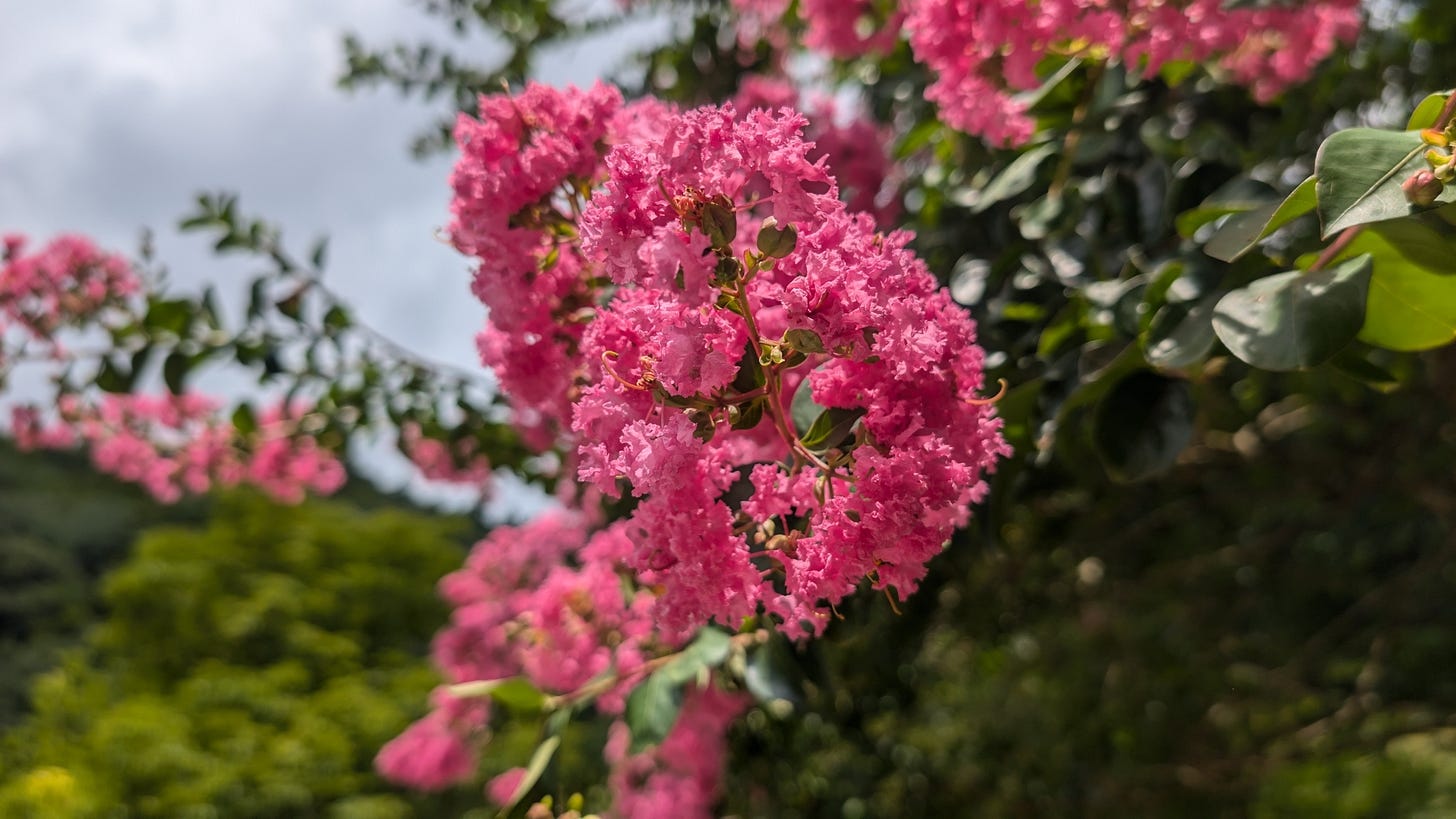MICRO-SEASON — AUG 26 - SEP 8
Take your time, shed summer flowers, put on pants, other life hacks, and more
UPDATES & ANNOUNCEMENTS
Parsley Steinweiss a.k.a. P-Slay will lead upcoming Tuesday—Saturday walks. She’s the best.
PR alert! Read an interview with our favorite
bearderbirder.Big thank you to Usal Projects for showing up yesterday. Check them out!
Your new binoculars are here! If you got in on our latest Nocs Provisions group discount, pick your goodies up at a Saturday walk! Or else DM us.
MICRO-SEASON AUG 26—SEP 8
Things take the time they take. Don’t worry. How many roads did Saint Augustine follow before he became Saint Augustine? —“Don’t Worry” by Mary Oliver
Current Japanese micro-season: Heat starts to die down & Rice ripens. As for McGolrick Park, perhaps New York City and even larger swathes of the eastern US, we notice—
Crape Myrtles gently weep · Small-leaved Plantain Lilies flower · Liriope berries ovate · First of season Black-throated Green Warbler, Cooper’s Hawk, Olive-sided Flycatcher, Red-eyed Vireo, Rose-breasted Grosbeak, Ruby-throated Hummingbird · Winterberry holly fruits redden · Pants wearers reemerge
BIRD REPORT
Who’d we notice in McGolrick Park this Micro-season?
American Redstart · Common Yellowthroat · Ovenbird · Chestnut-sided Warbler · Olive-sided Flycatcher · Red-eyed Vireo · Blue Jay · Northern Cardinal · Common Grackle · Laughing Gull · Black-throated Blue Warbler · Canada Warbler · Rose-breasted Grosbeak · Black-throated Green Warbler · Ruby-throated Hummingbird · Blue-gray Gnatcatcher · Baltimore Oriole · Least Flycatcher · Red-tailed Hawk · Eastern Wood-Pewee · American Crow · Black-and-white Warbler · Rock Pigeon · European Starling · American Robin · House Sparrow · Mourning Dove
List got you feeling like you’re missing the migration gods’ earliest emissaries? For the run of September, join us on Tuesday and Friday mornings, when birds are most active, starting around 6:30am. Just show up.
Note that many of the above birds were seen wearing their “Female” plumage—what migrating birds of both sexes sport in fall.
ON NOTICE: RUBY-THROATED HUMMINGBIRDS
Hummingbaes! These zoomies are findable all summer long in NYC’s larger parks, like Prospect and Jamaica Bay. Those we’re just seeing in McGolrick are probably migrating from summer scenes north of NYC. They’ll all end up wintering in the Everglades, south Mexico, or Central America. [Check their range map!]


We only kick it with one hummer species east of the Rockies. So if you notice that telltale, not-quite-bug-not-quite-bird vrooom, you can safely assume it’s a Ruby-throated Hummingbird.
West of the Rockies are mostly Anna’s, Calliope, Allen’s, Rufous, Black-chinned, then an explosion of hot southwestern hummies. Why so many there? That area is situated at the North American apex of Mexico’s 1000-mile-long Sierra Madre Occidental mountain range. A perfect invitation for neotropical birds to longitudinally shuffle to-and-fro come migration! [Read more.]
Hummingbirds nip nectar. Check Crape Myrtles and other flowers!




